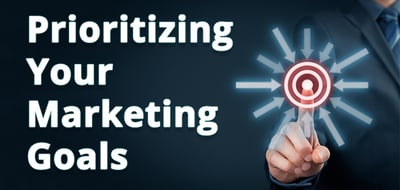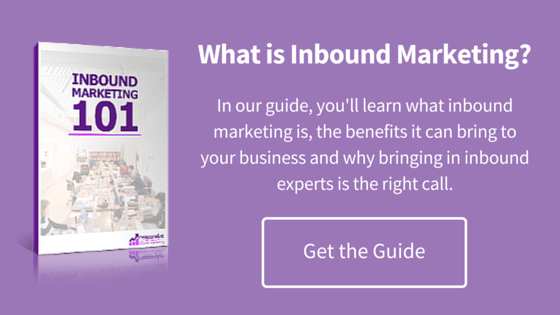Brand awareness and lead generation fall under different stages of the inbound methodology. When building awareness, you’re trying to attract strangers and turn them into website visitors, but with lead generation, the goal is to attract visitors and turn them into leads. 
Your business needs both strategies, but how should you choose which to prioritize when both are important for reaching your inbound marketing goals?
Like most inbound strategies, the pieces work best when they are used together in the right way and at the right time. Establishing a solid brand will also help you to generate leads. Think about your short and long terms goals and how these strategies can get you there. Obviously you need customers and want to grow your business. Expanding your audience with brand awareness campaigns can also reach new people who might be the perfect fit for your business that you can later target with your content.
Here’s how brand awareness and lead generation can both help you reach your inbound marketing goals.
Brand Awareness
Brand awareness is essentially how well people know your brand, as well as what emotions and images they associate with the company. If someone mentioned the insurance company Geico, what’s the first thing that comes to mind? Maybe their catchphrase about saving money on car insurance, and probably also the Geico gecko.
How about when you’re in the store looking to pick up some toothpaste. Do you go for a “name brand” or grab the store brand or something else because it’s less expensive?
Brand awareness is a bit abstract so it can be challenging to measure, but is an important part of differentiating your business and eventually getting someone to choose your company over another option. This is important whether you are a new business or more established because there will always be people who fit your buyer personas who haven’t heard of you yet or haven’t yet needed your services.
When you’re working to build awareness for your company, you can use your website, messaging, social media presence and other materials, to shape how people think about your brand. Don’t be afraid to have some personality and show people what you stand for as a company.
You want people to think of your brand first when they need to make a purchase of the product or service you offer, and you also want to be the brand they recommend to their friends. 70% of people are more likely to buy a product or service when they see content about it that has been shared by a friend.
Building trust through content marketing can help people to choose your company over other options. Even when you’re working on improving brand awareness, you should be focusing on your buyer personas. You can do this by creating high quality content that speaks to your personas. This will also help you to establish your company as an expert in the industry, and the resource people go to first. Make sure tone and messaging are consistent throughout all of your channels, including your website, blog posts and social media.
When done well, brand awareness leads to trust, which will lead to more loyal customers. And that is the ultimate goal - customers that keep coming back, and tell their friends.
Lead Generation
The last thing you want to do after you’ve built up a positive image of your brand is annoy people with cold calls and impersonal messaging. Don’t waste your time and resources on people who don’t want to hear from you.
According to HubSpot, “Lead generation is the process of attracting and converting strangers and prospects into leads […] It's a way of warming up potential customers to your business and getting them on the path to eventually buying.”
When someone becomes a lead, they are already interested, to some extent, in what your company has to offer, and they may have even found you through your brand awareness efforts. You can then focus on sending them the right messages because they’ve indicated that they are open to hearing from you. This should be the beginning of an ongoing relationship that results in a lead becoming a customer.
Once you’ve attracted visitors to your website, you can work on converting them into leads. Use your content strategy to drive visitors to a landing page where they can be converted. Include relevant content offers in your blog posts or promote them on there own on your social media platforms. Then use a compelling call to action to move a visitor to a landing page. The form on your landing page needs to ask for just the right amount of information. Ask for too much information, and you risk the visitor leaving the page without converting, but if you ask for too little information, then it’s a wasted opportunity to learn more about the lead. The form should reflect the value of the offer.
Once you’ve begun to generate leads, you need to help move them forward on the buyer’s journey through nurturing. Continue to use your content strategy to send relevant information which helps to educate your leads. Make sure you know if you have a sales-qualified lead before passing them off to your sales team.
Reach your inbound marketing goals by using content to establish your brand and turn visitors into leads.
